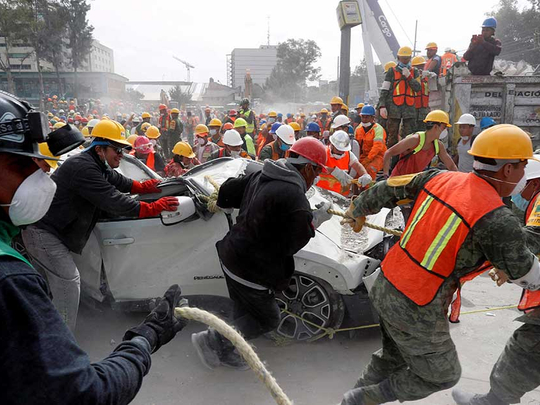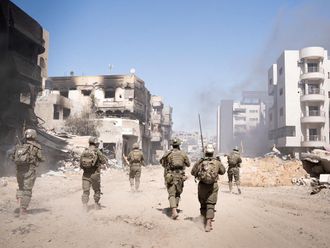
In his account of the 1985 earthquake, which killed between 6,000 and 30,000 people (there are no precise figures) and destroyed more than 800 buildings in Mexico City, Carlos Monsivais, one of the country’s greatest writers, described what he saw as the “emergence of civil society.”
At the time, Monsivais, who died in 2010, witnessed the discrediting of an unpopular government, led by then-President Miguel de la Madrid, of Mexico’s Institutional Revolutionary Party (PRI). He recounted how, while the government was slow to react and distorted the death toll and the tragedy’s extent, civilians embraced the responsibility of helping the victims and supporting the disoriented rescue workers.
In his book “‘No Sin Nosotros’: Los Dias del Terremoto, 1985-2005” [“‘Not Without Us’: The Days of the Earthquake”], he wrote that “the whole of society across Mexico City organised itself with speed and skill, and with a core that stretched across upper and lower classes. Throughout two weeks, roughly one million people scrambled to create shelters, to supply food and clothes, to collect funds, to locate missing people, to retrieve the remains of the deceased and to rescue the survivors trapped in the rubble, to organise transport, to provide psychological counselling, to work to prevent health epidemics, to remove the mounds of gravel, and to demolish the ruins that posed hazards.”
For Monsivais, the volunteers of 1985 realised a concept of civil society that had been “abstract” until then in Mexico.
In an interview about the earthquake that hit the southern part of the country on September 7, Jean Francois Prud’homme, a political scientist and general academic coordinator at El Colegio de Mexico, echoed what Monsivais had witnessed. “What we saw in 1985 was a waking up of Mexican society to take the reins to overcome the catastrophe, as there was a collective awareness that the government was weak.”
After Tuesday’s earthquake in Mexico City, Prud’homme said in a follow-up interview that it was happening again: “In 1985, just like now, what is most remarkable in the streets of Mexico City is the solidarity. Nobody appears afraid. The difference is that, 30 years ago, there was less information available about what to do. Now, there’s a whole culture of prevention and reaction to earthquakes that makes volunteers more efficient. The experience and training have helped.”
Reports from journalists on the ground and images on the news confirm this. Amid power cuts and dark traffic lights, people are seen with megaphones or shouting to direct the traffic, restaurants are opening their doors to offer water, food and electric outlets to let people charge their phone batteries and locate family and friends. Private hospitals are offering free care for the injured.
“It’s early to evaluate the performance of [President Enrique] Pena Nieto, but at least he’s going to the places that were hit and the public services are out there in the streets,” Prud’homme says. Mexico is nine months away from a presidential election and Pena Nieto’s PRI is not doing well in the polls.
A significant development since 1985 is that solidarity can now rely on another tool, the internet. Government and civil society groups have been able to use social networks to issue warnings and security instructions and guide people on how to behave in damaged areas.
Mexicans are very familiar with most of the guidelines, such as “don’t run,” “exit buildings calmly,” “stay away from power cables and towers,” “open your WiFi to everybody,” “don’t use the phone unnecessarily to avoid overloading the lines,” “avoid making noise near rubble, so distress calls can be heard.”
— Worldcrunch, in partnership with Folha de S.Paulo/New York Times News Service
Sylvia Colombo, a Brazilian journalist, is the Latin American correspondent for Folha de S.Paulo.










